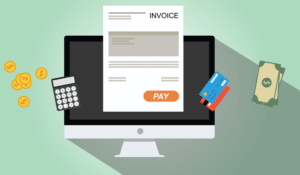
The $1,500 balance in the asset account Prepaid Insurance is the preliminary balance. The correct amount is the amount that has been paid by the company for insurance coverage that will expire after the balance sheet date. If a review of the payments for insurance shows that $600 of the insurance payments is for insurance that will expire after the balance sheet date, then the balance in Prepaid Insurance should be $600. To determine if the balance in this account is accurate the accountant might review the detailed listing of customers who have not paid their invoices for goods or services. Let’s assume the review indicates that the preliminary balance in Accounts Receivable of $4,600 is accurate as far as the amounts that have been billed and not yet paid.
How Josh Decided It Was Time to Finish His CPA
An interest-only note requires the borrower to pay only interest throughout the loan term. This structure is useful when a business expects increased cash notes payable journal entry flow in the future (e.g., from seasonal revenue, asset sales, or investment returns). Notes payable is a liability account that represents money a company owes under a formal promissory note. It reflects a legal obligation to repay borrowed funds, typically with interest.

Best Account Payable Books of All Time – Recommended
Suppose the company pays back £5,000 toward this note in a month, the entries would be credit ‘Cash’ and debit ‘Notes Payable’, each by £5,000. This allocation records the repayment and reduction in cash and liability respectively. The company can make the interest payable journal entry by debiting the interest expense account and crediting the interest payable account. In this journal entry of issuing the $10,000 promissory note, both total assets and total liabilities on the balance sheet increase by the same amount of $10,000 as of July 1, 2021. Later, when we make the interest payment on the note payable, we can make another journal entry with the debit of the interest payable account and the credit of the cash account.
Example of Journal Entries for Notes Receivable
Unlike accounts payable, which are informal debts for goods or services received, notes payable involve specific terms such as interest rates and maturity dates. If the amount of the note payable is less than the asset’s full cost, record a credit to the cash account for the difference between the asset’s cost and the note payable amount. In the previous example, assume the note payable was for $15,000 and you paid $5,000 cash for the rest of the $20,000. Credit $15,000 to the notes payable account instead of $20,000, and credit $5,000 to the cash account in the same journal entry. The initial recognition of notes payable and bonds payable involves recording the cash or assets received and the corresponding liability.
Adhering to proper accounting standards, such as Generally Accepted Accounting Principles (GAAP) or International Financial Reporting Standards (IFRS), is paramount. These standards provide a framework for consistent and transparent financial reporting, which is vital for the reliability of financial statements. Furthermore, understanding the implications of accrued interest and the need for consistent amortization methods helps in maintaining the integrity of financial data. Effective debt management not only aids in compliance with accounting standards but also enhances the company’s credibility with investors, creditors, and other stakeholders. This entry records the retirement of the bonds payable, the unamortized premium, the loss on extinguishment, and the outflow of cash.
- The balance in the asset Supplies at the end of the accounting year will carry over to the next accounting year.
- The $25,000 balance in Equipment is accurate, so no entry is needed in this account.
- For simplicity, we will illustrate only the notes sold at their face value.
- Therefore, it must record the following adjusting entry on December 31, 2018 to recognize interest expense for 2 months (i.e., for November and December, 2018).
- Notes payables are presented on a company’s balance sheet as a liability account.
- Interest is now included as part of the payment terms at an annual rate of 10%.
Cash Flow

We now consider two short-term notes payable situations; one is created by a purchase, and the other is created by a loan. Notes Payable are a promise in writing whereby a borrower assures repaying the lenders within a specific period. These promissory notes indicate the loan that one party lends to the other, expecting the timely repayment, which may be the principal alone or the principal along with the interest amount.
- The amount of insurance premiums that have not yet expired should be reported in the current asset account Prepaid Insurance.
- When inventory items are acquired or produced at varying costs, the company will need to make an assumption on how to flow the changing costs.
- Before we explain and illustrate the debits and credits in accounting and bookkeeping, we will discuss the accounts in which the debits and credits will be entered or posted.
- These entries ensure that the financial statements accurately reflect the company’s obligations and expenses over time.
- Here is a classic video on short term notes payable that will allow us to review some of the concepts we learned when discussing Notes Receivable.
- It also shows that the bank earned revenues of $13 by servicing the checking account.
- While there are clear distinctions between ‘Notes Payable’ and ‘Accounts Payable’, they also share certain commonalities.
- Some people argue that notes payable can be adjusted under the head of account payables.
- This journal entry is made to eliminate the liability that the company has recorded previously for the interest on borrowing money.
- The systematic allocation of the cost of an asset from the balance sheet to Depreciation Expense on the income statement over the useful life of the asset.
- It ensures that financial obligations are accurately reflected, compliance is maintained, and stakeholders are well-informed.
- This type of structure is uncommon in typical business loans and usually used in specialized financing or during difficult financial periods.
These accounts normally have credit balances that are increased with a credit entry. Whenever cash is paid out, the Cash account is credited (and another account is debited). Whenever cash is received, the Cash account is debited (and another account is credited). The initial challenge is understanding which account will have Remote Bookkeeping the debit entry and which account will have the credit entry. Before we explain and illustrate the debits and credits in accounting and bookkeeping, we will discuss the accounts in which the debits and credits will be entered or posted.
Comparing and Contrasting Notes Payable and Accounts Payable
Notes payable is an instrument to extend loans or to avail fresh credit in the company. For example, on October 1, 2020, the company ABC Ltd. signs a $100,000, 10%, 6-month note that matures on March 31, 2021, to borrow the $100,000 money from the bank to meet its short-term financing needs. The company ABC receives the money on the signing date and as agreed in the note, it is required to back both principal and interest at the end of the note maturity. This account is then closed to the owner’s capital account or a corporation’s retained earnings account. This is a non-operating or “other” item resulting from the sale of an asset (other than inventory) for more than the amount shown in the company’s accounting records. The gain is the difference between the proceeds from the sale and the carrying amount shown on the company’s books.

The effective interest method calculates interest expense based on the carrying amount of the bond at the beginning of each period and the bond’s yield or market interest rate at issuance. This method results in a varying amount of premium or discount amortization each period. contribution margin These loans provide the necessary capital without straining the company’s cash flow. Installment loans provide borrowed funds for various business needs, such as expansion and equipment purchase. Accounts Payable decreases (debit) and Short-Term Notes Payable increases (credit) for the original amount owed of $12,000.
